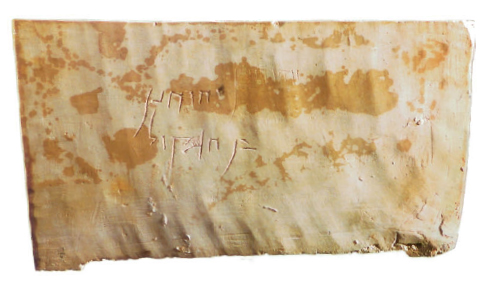Ossuary of Yehohanan son of Hagkol
Givat Hamivtar, Jerusalem, stone.
An ossuary inscribed with the name of the deceased, Yehohanan ben (son of) Hagkol, was found while excavating a burial cave in northern Jerusalem. Examination of the skeletal remains preserved in the ossuary revealed that the right heel had been pierced by a large iron nail, to which fragments of wood were attached. The find clearly shows that Yehohanan had been put to death by crucifixion, the humiliating and excruciating form of execution used by the Romans to punish rebels, thieves and captives. Though many met their fate by crucifixion, this important find represents the sole archeological evidence for the practice discovered to date.
At the time of his death, Yehohanan was in his mid-twenties. He was not an important historical figure, and we therefore know nothing about his life or the crime that led to his punishment. The find reveals that his feet must have been nailed to either side of the crucifixion post, and not to its front, as it is traditionally depicted.
After he died, Yehohanan’s body was taken down from the cross for burial in the family tomb. However, the nail that affixed his right foot to the post had been bent, and in order to avoid damaging the body, it was necessary to remove part of the post along with it. After a year, Yehonan’s bones were gathered and deposited in an ossuary, on which his name was incised.
Cradle of Christianity- Treasures from the Holy Land. Book in conjunction to exhibition by the Israel Museum. Beachwood, Ohio- Maltz Museum of Jewish Heritage, 2006.
See also-
